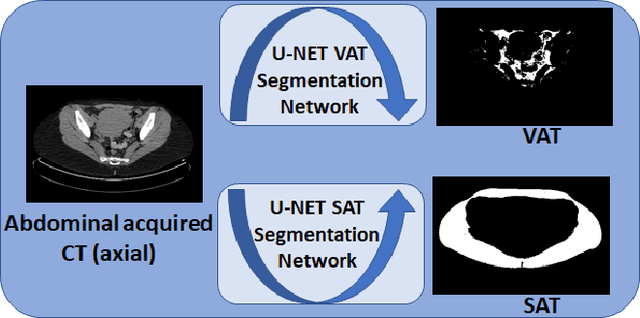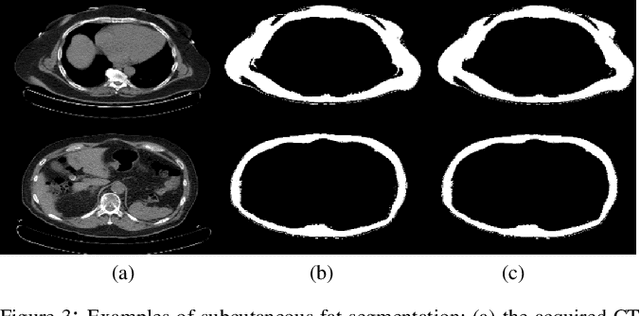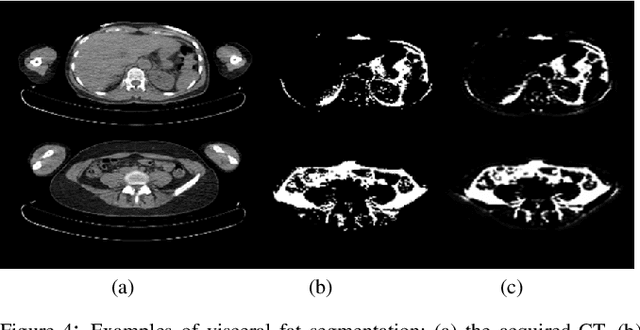Samira Masoudi
Adipose Tissue Segmentation in Unlabeled Abdomen MRI using Cross Modality Domain Adaptation
May 11, 2020



Abstract:Abdominal fat quantification is critical since multiple vital organs are located within this region. Although computed tomography (CT) is a highly sensitive modality to segment body fat, it involves ionizing radiations which makes magnetic resonance imaging (MRI) a preferable alternative for this purpose. Additionally, the superior soft tissue contrast in MRI could lead to more accurate results. Yet, it is highly labor intensive to segment fat in MRI scans. In this study, we propose an algorithm based on deep learning technique(s) to automatically quantify fat tissue from MR images through a cross modality adaptation. Our method does not require supervised labeling of MR scans, instead, we utilize a cycle generative adversarial network (C-GAN) to construct a pipeline that transforms the existing MR scans into their equivalent synthetic CT (s-CT) images where fat segmentation is relatively easier due to the descriptive nature of HU (hounsfield unit) in CT images. The fat segmentation results for MRI scans were evaluated by expert radiologist. Qualitative evaluation of our segmentation results shows average success score of 3.80/5 and 4.54/5 for visceral and subcutaneous fat segmentation in MR images.
Instance-Level Microtubule Segmentation Using Recurrent Attention
Jan 17, 2019



Abstract:We propose a new deep learning algorithm for multiple microtubule (MT) segmentation in time-lapse images using the recurrent attention. Segmentation results from each pair of succeeding frames are being fed into a Hungarian algorithm to assign correspondences among MTs to generate a distinct path through the frames. Based on the obtained trajectories, we calculate MT velocities. Results of this work is expected to help biologists to characterize MT behaviors as well as their potential interactions. To validate our technique, we first use the statistics derived from the real time-lapse series of MT gliding assays to produce a large set of simulated data. We employ this dataset to train our network and optimize its hyperparameters. Then, we utilize the trained model to initialize the network while learning about the real data. Our experimental results show that the proposed algorithm improves the precision for MT instance velocity estimation to 71.3% from the baseline result (29.3%). We also demonstrate how the injection of temporal information into our network can reduce the false negative rates from 67.8% (baseline) down to 28.7% (proposed).
 Add to Chrome
Add to Chrome Add to Firefox
Add to Firefox Add to Edge
Add to Edge